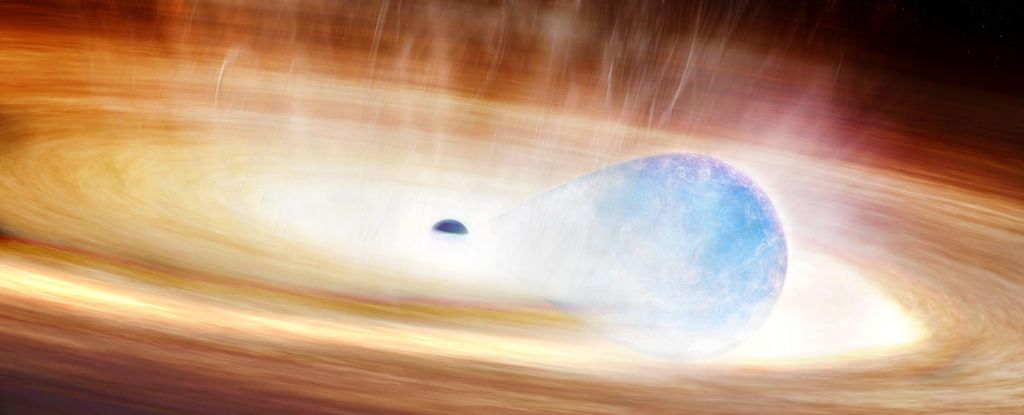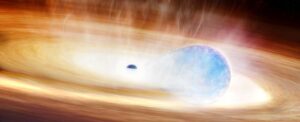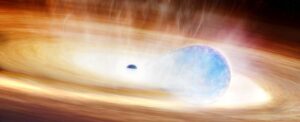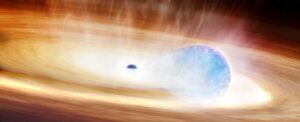
A supernova explosion observed 750 million light-years away may have resulted from a star attempting to consume a black hole. This extraordinary event, designated as SN 2023zkd, was first detected by the Zwicky Transient Facility on July 7, 2023. Initially appearing to follow the standard pattern of a supernova, subsequent data revealed a peculiar behavior: the explosion brightened again after six months, prompting astronomers to investigate further.
Leading the analysis, astronomer Alexander Gagliano from the NSF Institute for Artificial Intelligence and Fundamental Interactions, explained that the phenomenon suggests a catastrophic interaction between a massive star and a black hole. “Our analysis shows that the blast was sparked by a catastrophic encounter with a black hole companion, and is the strongest evidence to date that such close interactions can actually detonate a star,” he stated.
Supernovae generally occur through various processes, often marking the end of a massive star’s life cycle or resulting from thermonuclear explosions on white dwarfs. They are relatively common, with a few hundred observable supernovae appearing across the universe each year. Typically, they present a predictable light curve, characterized by a bright flare followed by a gradual dimming.
Initially, SN 2023zkd’s observations aligned with typical supernova patterns. However, in January 2024, a monitoring tool flagged the explosion as deserving of closer examination. Data from multiple observatories confirmed the expected fading light curve. Remarkably, after 240 days, SN 2023zkd brightened again, nearly matching its initial luminosity, signaling an unusual event that warranted deeper investigation.
Utilizing machine learning techniques, researchers scoured archival observations of the region surrounding the explosion, discovering that the object had been consistently brightening for over four years prior to the initial detection. This long-term behavior is atypical for stars nearing their explosive end, suggesting a complex interaction involving a massive dying star and a compact object, likely a black hole, in a decaying orbit.
As the two celestial bodies spiraled closer, the star shed significant mass, causing it to glow. Eventually, the gravitational forces at play became so intense that the star’s gravity subsumed the black hole. This close proximity triggered the supernova explosion. The first peak in brightness was attributed to the supernova’s shockwave colliding with low-density gas surrounding the system, while the second peak resulted from a more sustained interaction with the dense material ejected by the star in its final years.
The fluctuations observed prior to the explosion pointed to a system under stress from the black hole’s influence. Gagliano highlighted that the gravitational impact of a black hole, while compact, behaves similarly to a star of equal mass at a suitable distance. For instance, a black hole with the same mass as the Sun has a much smaller event horizon of approximately 6 kilometers, compared to the Sun’s diameter of about 1.4 million kilometers.
The research presents two possible scenarios: either the black hole completely consumed the star before the explosion, or the star’s gravitational pull led to the black hole’s ingestion. In either case, the result is a larger black hole, contributing to the cosmic landscape.
“We’re now entering an era where we can automatically catch these rare events as they happen, not just after the fact,” Gagliano remarked. “That means we can finally start connecting the dots between how a star lives and how it dies, and that’s incredibly exciting.”
The findings from this study will be published in The Astrophysical Journal, with a preprint available on arXiv, marking a significant advancement in our understanding of supernova phenomena and black hole interactions.






